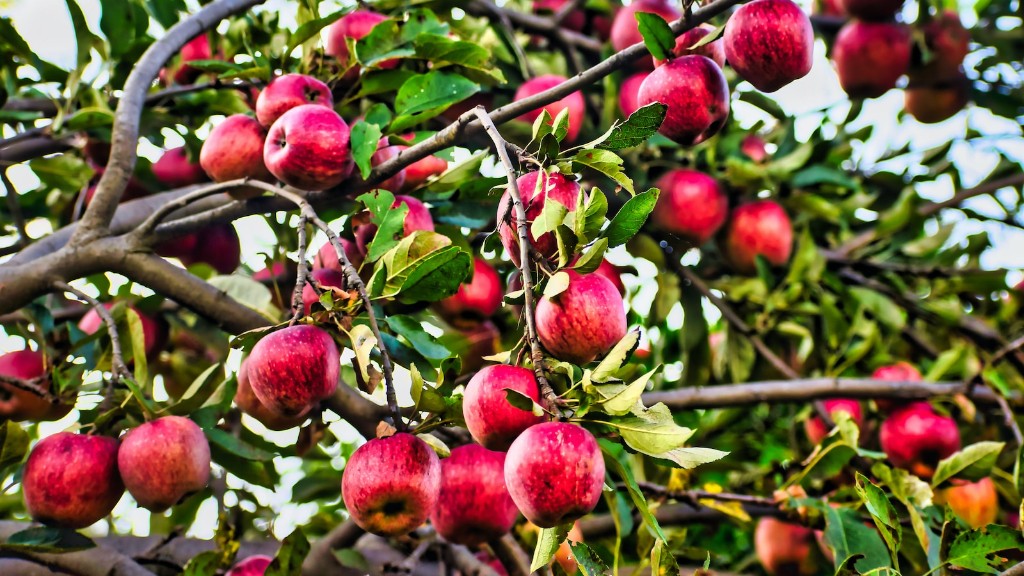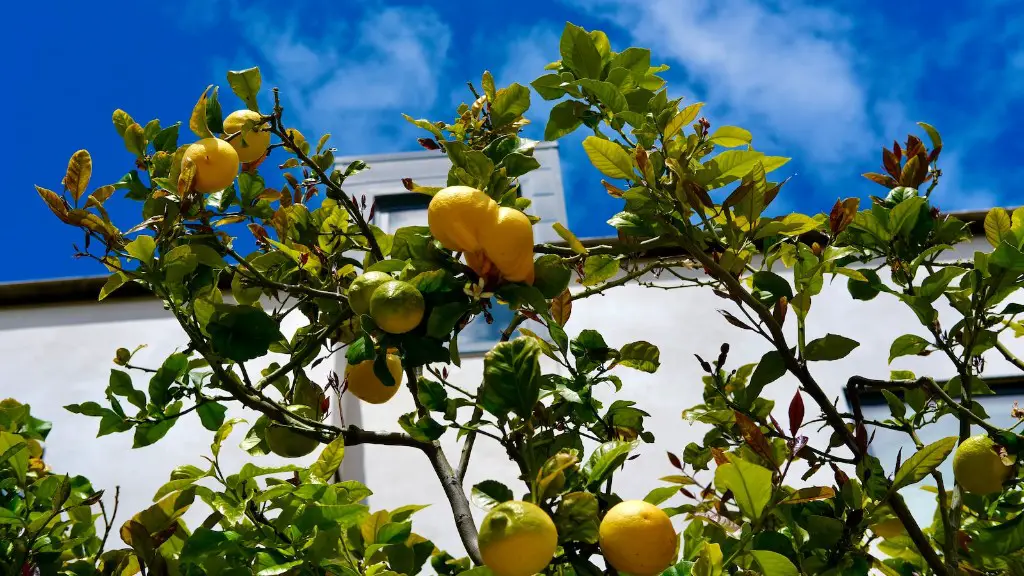Apple tree leaves curl for several reasons including; nutrient deficiencies, moisture extremes, infection, cold temperatures, and improper pruning. Nutrient deficiencies are usually caused by lack of essential minerals such as nitrogen, potassium, phosphorus, or magnesium. When a tree lacks these nutrients, the leaves may start curling and browning.
Excessive moisture can also cause curling and browning of leaves. When leaves are constantly wet, they tend to curl up on themselves, mimicking the effects of a nutrient deficiency. On the other hand, apple trees require adequate water to remain healthy and if insufficient water is given, the leaves also curl in response to the lack of water.
A common fungal infection which causes apple tree leaf curl is apple scab. The foliage is the most affected by this disease which causes the leaves to develop a scabby, olive-brown color and it can be severe at the peak of its season. The leaves may become so discolored and deformed that the tree loses its vigor.
Cold weather can also cause the leaves to curl up. When temperatures drop below a certain threshold, the leaves of some apple trees may become susceptible to becoming hardened or brittle. This happens because the cells of the leaves freeze and become damaged. In other words, the cells’ cell walls break which causes the leaves to become shriveled and discolored.
Lastly, improper pruning can cause the leaves to curl. Pruning of applied leaves can cause the tree to become confused and it can affect the leaves by making them curl up. Pruning at the wrong time can also reduce the amount of chlorophyll in the leaves, causing the leaves to become pale and purplish. It is important to properly prune the trees and avoid major pruning in order to prevent curling of the leaves.
Impact on Nutrients
There is much evidence to suggest that curling of apple tree leaves can have a significant impact on the tree’s nutrients. As the leaves curl, they become unable to absorb the necessary nutrients, leaving the tree in a state of deficiency. This in turn leads to a wide range of issues, including reduced fruit yields, stunted growth, and increased susceptibility to disease and pests. In addition, curling of the leaves means less exposure to sunlight, which is necessary for photosynthesis and growth.
Chemical Solutions
The good news is that chemical solutions are available which can help to reduce leaf curling. Foliar sprays can provide nutrients to the tree, allowing it to recover from its nutrient deficiencies. These sprays may also help to reduce the risk of infection, allowing the tree to resist the spread of disease. In addition, chemical treatments such as fungicides can help to protect the tree from leaf curl due to a fungal infection.
Temperature Impact
Temperature is another key factor which can cause the leaves of the apple tree to curl. When subjected to too much cold, the cells of the leaves become damaged, causing them to curl or become brittle. In order to combat this, it is important to ensure that the tree is exposed to a stable and mild temperature. A heated apple tree enclosure during periods of cold weather can also be beneficial in reducing the risk of leaf curling.
Pruning Considerations
Another factor which should be considered is the possibility of improper pruning of the apple tree’s leaves. Pruning at the wrong time can leave the tree confused and may reduce the amount of chlorophyll present in the leaves. It is therefore important to ensure that the tree is pruned carefully in order to reduce the risk of curling of the leaves.
Natural Solutions
Finally, there are some natural solutions which can be used to reduce the risk of leaf curling. Regular applications of compost around the roots of the tree, for instance, can help to provide essential nutrients and increase soil fertility. In addition, mulch can help to retain moisture and protect the soil from cold temperatures. These natural solutions are usually the most effective way of preventing leaf curling.


